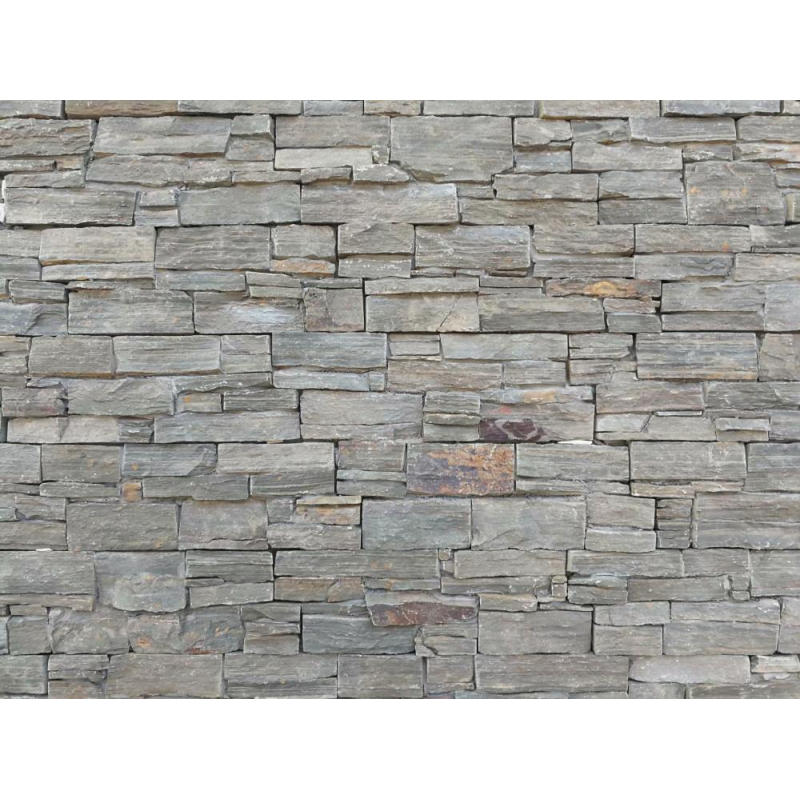
Dutsen halitta yana daya daga cikin abubuwan da aka fi amfani da su a gidaje da lambuna. Amma shin kun taɓa tsayawa don mamakin inda takamaiman fale-falen dutsenku, bulo, ko bene suka fito?

Natural stone was created thousands of years ago when the Earth was just a ball of mineral gases. As these gases began to cool down, they compressed and solidified to form the world we know today. It was during this process that natural stone was formed – the type of stone created depends on what type of minerals were combined at that time. This was a slow process that occurred over millions of years. As the Earth began to settle, many of these seams of stone were gradually pushed to the surface by heat and pressure, creating the large formations we see today.
Stone can come from anywhere in the world, and the type of stone is determined by its origins. There are quarries in America, Mexico, Canada, Italy, Turkey, Australia, and Brazil, as well as many other countries around the globe. Some countries have multiple natural stone quarries, whilst others only have a few. Let’s look in closer detail at where particular stones originate and how they were formed.
Marmara is the result of limestone that has been altered through heat and pressure. It’s a versatile stone that can be used on virtually anything – statues, stairs, walls, bathrooms, counter tops, and more. Usually seen in white, marble is also common in black and grey tints, and has great weather endurance.
Quartzite ya samo asali daga dutsen yashi wanda aka canza ta hanyar zafi da matsawa. Dutsen ya fi zuwa da fararen fata, amma kuma ana iya samun shi da launin ruwan kasa, launin toka, ko launin kore. Yana daya daga cikin nau'in dutse mafi wuyar halitta, yana mai da shi kyakkyawan zaɓi don gina facades, countertops, da sauran tsarin da ke buƙatar duwatsu masu nauyi.
Granite Asalin dutse ne mai wuta wanda aka fallasa ga magma (lava) kuma ya canza ta hanyar bayyanar da ma'adanai daban-daban. Ana samun dutsen a cikin ƙasashen da suka ga ayyukan tsaunuka masu yawa a wani lokaci, kuma ana samun su cikin manyan launuka iri-iri daga baki, launin ruwan kasa, ja, fari, da kusan dukkan launukan dake tsakanin. Granite babban zaɓi ne don dafa abinci da dakunan wanka saboda halayen ƙwayoyin cuta.
Dutsen farar ƙasa shi ne sakamakon danne murjani, teku, da sauran rayuwar teku tare. Akwai nau'ikan farar ƙasa guda biyu, nau'in nau'i mai ƙarfi wanda ke cike da alli, da nau'i mai laushi tare da ƙarin magnesium. Ana yawan amfani da dutse mai ƙarfi a cikin masana'antar gini, ko kuma a yi ƙasa a yi amfani da shi a turmi saboda ingancinsa na ruwa.
Bluestone is sometimes referred to as basalt, and is one of the most common natural stones around the world. Bluestone forms through the alteration of lava, and because of this, is one of the closest stones to the Earth’s surface. Basalt is generally darker in colour, and is used as house roofing and floor tiles because of its hard texture.
Slate an halicce shi lokacin da aka canza shale da laka ta hanyar zafi da matsa lamba. Akwai a cikin launuka daga baki, purple, blue, kore, da launin toka, slate ya zama sanannen zaɓi don yin rufi saboda ana iya yanke shi da sauƙi kuma yana jure yanayin sanyi tare da ƙarancin lalacewa. Har ila yau, ana amfani da Slate a matsayin tiling ɗin bene saboda dawwamar yanayin sa.
Travertine is created when floodwaters wash through limestone, leaving mineral deposits throughout. As it dries out, the extra minerals solidify to gradually create a much denser material called travertine. This stone is good as a replacement for marble or granite, as it’s much lighter and easier to work with, yet still durable. For this reason travertine is often used on floors or walls, and is estimated to last around fifty years if maintained regularly.